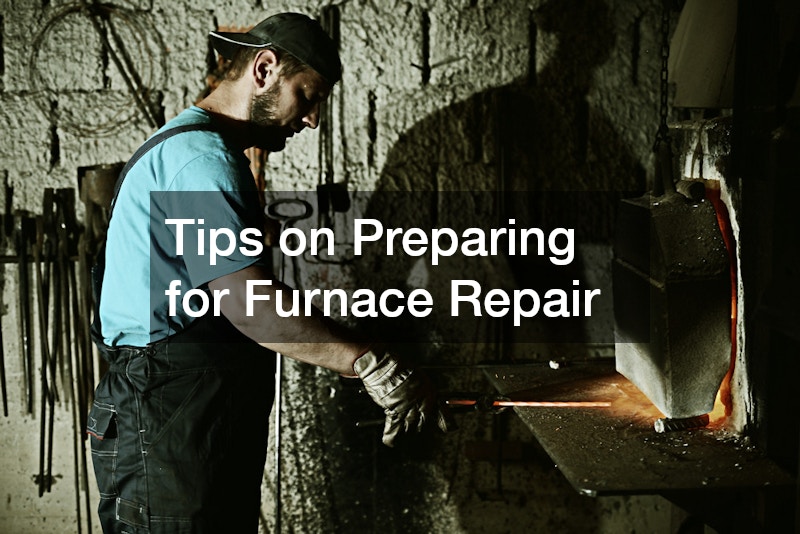Maintaining a furnace is crucial to keeping your home comfortable, especially during colder months. When your furnace malfunctions, it can be frustrating, but with the right preparation, the repair process can go smoothly. Whether you’re facing minor issues or a more complex problem, being prepared for furnace repair can save you time, money, and stress. Here are some key tips to consider when preparing for furnace repair.
1. Identify the Issue Early
The first step in preparing for furnace repair is identifying any signs that something might be wrong.
A furnace usually provides warning signs before it breaks down completely. Some common indicators that your furnace needs repair include:
Unusual noises like banging, rattling, or squealing
Inconsistent heating or weak airflow
Higher-than-normal energy bills
A yellow pilot light instead of a blue one
The furnace turning on and off frequently (short cycling)
By paying attention to these early signs, you can address the issue before it worsens, potentially avoiding more expensive repairs.
2. Check the Thermostat
Sometimes, what seems like a furnace issue is actually a problem with your thermostat. Before calling in a repair technician, check to see if the thermostat is set to the correct temperature and mode. Ensure the thermostat is on “heat” mode, and that the temperature is set high enough to engage the furnace. If your thermostat is battery-operated, replace the batteries and see if that resolves the issue.
If everything seems correct with the thermostat and the furnace still isn’t working properly, it may be time to contact a professional for repairs.
3. Review Your Furnace’s Warranty
Before scheduling a furnace repair Burnsville MN residents rely on, review the warranty for your unit. Some furnaces come with warranties that cover certain repairs or parts for a specific period of time. Knowing whether your furnace is still under warranty can help you save money, as you may be entitled to free or discounted repairs.
Make sure to have the necessary paperwork ready, such as the proof of purchase and any information on the warranty coverage. This will make the process smoother when discussing repair costs with a technician or the furnace manufacturer.
4. Schedule a Professional Inspection
If you’ve identified issues with your furnace, it’s time to schedule an inspection with a licensed HVAC technician. Choose a reputable company with experience in furnace repairs to ensure you receive high-quality service. It’s wise to schedule regular furnace maintenance at least once a year, as this can help prevent unexpected breakdowns and ensure that your system is operating efficiently.
When scheduling the repair, ask the technician about their availability and whether they offer emergency services in case your furnace fails completely during the winter. Some HVAC companies offer priority services for regular customers, which can be a benefit if you’re facing an urgent repair situation.
5. Clear the Area Around the Furnace
Before the technician arrives for your furnace repair, take a few moments to clear the area around the furnace. Make sure there’s ample space for the technician to access the unit without obstructions. Remove any furniture, boxes, or other items that might be in the way.
Clearing the area ensures the technician can move freely and safely while working on the furnace. It also reduces the risk of damaging personal belongings or causing accidents during the repair process.
6. Have Information About the Furnace Ready
To help the repair technician diagnose the issue more efficiently, gather key information about your furnace before the appointment. This includes the model number, make, and age of the furnace. If you’ve experienced issues in the past, let the technician know, as this may provide valuable context.
Also, take note of any unusual sounds, smells, or behaviors that the furnace has exhibited recently. The more details you can provide, the quicker the technician may be able to pinpoint the problem and make the necessary repairs.
7. Prepare Your Budget
Furnace repair costs can vary depending on the severity of the issue, the age of the unit, and whether any parts need to be replaced. Before committing to any repairs, it’s important to get an estimate from the HVAC technician. Make sure you understand the breakdown of the costs and ask whether any parts are covered under warranty.
In some cases, it may be more cost-effective to replace the furnace rather than invest in repeated repairs, especially if the furnace is old and nearing the end of its lifespan. Discuss your options with the technician to ensure you’re making a financially sound decision.
8. Consider Temporary Heating Solutions
If your furnace needs major repairs that require it to be out of commission for an extended period, consider using temporary heating solutions to keep your home comfortable. Space heaters, electric blankets, and fireplaces can help you stay warm while waiting for the furnace to be fixed. Be sure to follow safety precautions when using space heaters to prevent accidents or fire hazards.
If you live in an area with extremely cold winters, it’s crucial to have a backup heating plan in case your furnace repair takes longer than expected.
9. Plan for Regular Maintenance
After the repair is complete, it’s important to plan for regular furnace maintenance to extend the lifespan of your unit and reduce the likelihood of future breakdowns. Regularly changing the air filters, cleaning the vents, and scheduling annual inspections will help ensure that your furnace operates efficiently throughout the year.
HVAC technicians can often offer maintenance contracts that include yearly tune-ups, which can save you money in the long run by catching potential issues early before they become costly repairs.

